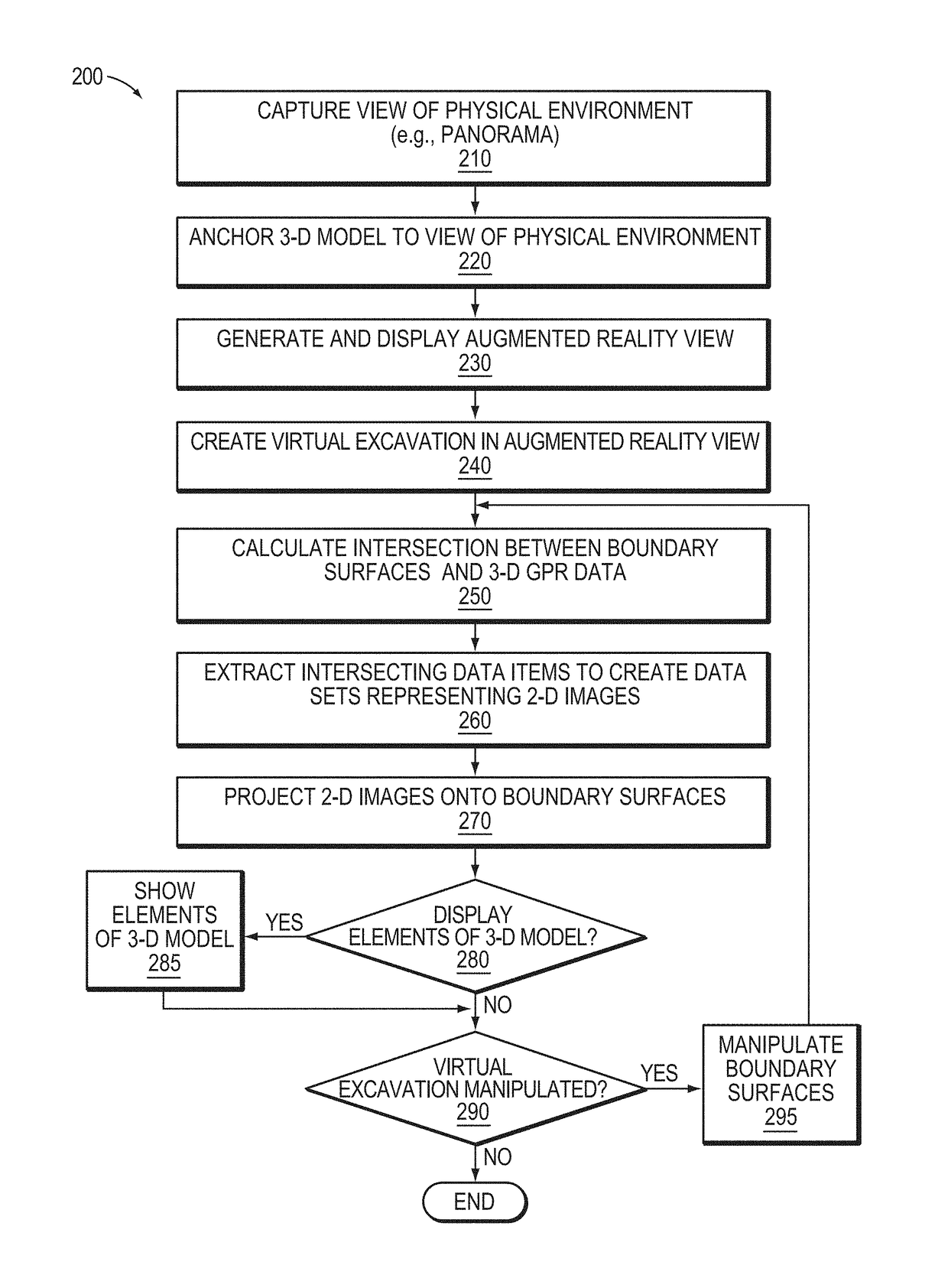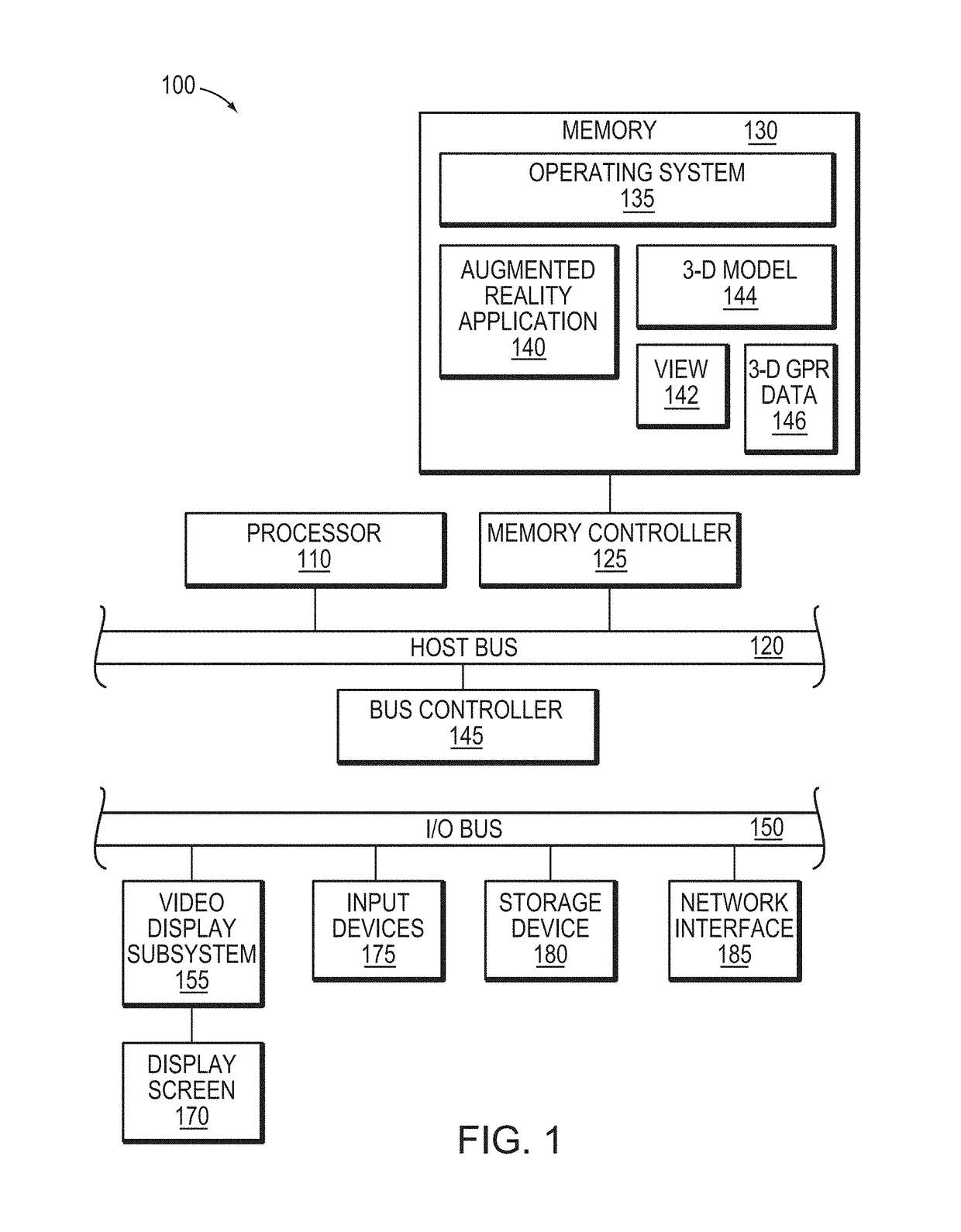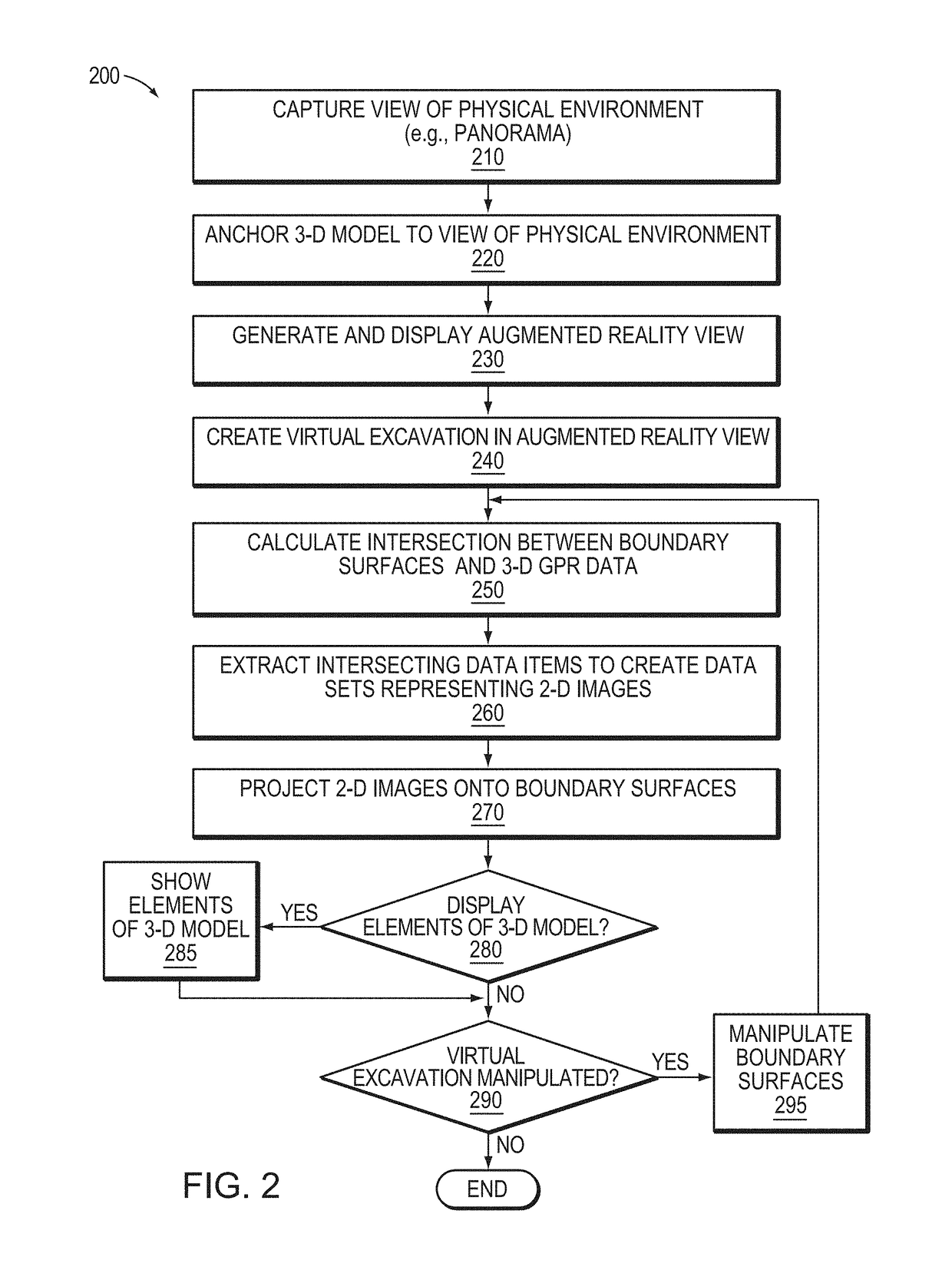Visualization of 3-D GPR data in augmented reality
a technology of augmented reality and gpr data, applied in the field of visualizing threedimensional (3d) data, can solve the problems of time-consuming and error-prone processes, and the loss of the benefits of the 3-d gpr data
- Summary
- Abstract
- Description
- Claims
- Application Information
AI Technical Summary
Benefits of technology
Problems solved by technology
Method used
Image
Examples
Embodiment Construction
[0021]FIG. 1 is a block diagram of an example electronic device 100, in which at least some of the presently described techniques may be employed. The electronic device may be a portable electronic device, for example, a tablet computer, an ultra-mobile personal computer (UMPC), a smartphone, a wearable computer, for example, with a headmounted display (HMD) (e.g., integrated into eyewear), or another type of mobile computing device that may be readily transported by a user about the physical environment. Alternatively, the electronic device may be a generally-stationary electronic device, for example, a desktop computer or server. The electronic device 100 includes at least one processor 110 coupled to a host bus 120. The processor 110 may be any of a variety of commercially available processors, such as an Intel x86 processor, or another type of processor. A volatile memory 130, such as a Random Access Memory (RAM), is coupled to the host bus 120 via a memory controller 125. The m...
PUM
 Login to View More
Login to View More Abstract
Description
Claims
Application Information
 Login to View More
Login to View More - R&D
- Intellectual Property
- Life Sciences
- Materials
- Tech Scout
- Unparalleled Data Quality
- Higher Quality Content
- 60% Fewer Hallucinations
Browse by: Latest US Patents, China's latest patents, Technical Efficacy Thesaurus, Application Domain, Technology Topic, Popular Technical Reports.
© 2025 PatSnap. All rights reserved.Legal|Privacy policy|Modern Slavery Act Transparency Statement|Sitemap|About US| Contact US: help@patsnap.com



